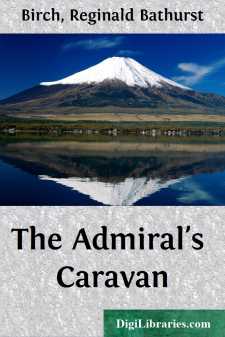Categories
- Antiques & Collectibles 13
- Architecture 36
- Art 48
- Bibles 22
- Biography & Autobiography 813
- Body, Mind & Spirit 142
- Business & Economics 28
- Children's Books 17
- Children's Fiction 14
- Computers 4
- Cooking 94
- Crafts & Hobbies 4
- Drama 346
- Education 46
- Family & Relationships 57
- Fiction 11829
- Games 19
- Gardening 17
- Health & Fitness 34
- History 1377
- House & Home 1
- Humor 147
- Juvenile Fiction 1873
- Juvenile Nonfiction 202
- Language Arts & Disciplines 88
- Law 16
- Literary Collections 686
- Literary Criticism 179
- Mathematics 13
- Medical 41
- Music 40
- Nature 179
- Non-Classifiable 1768
- Performing Arts 7
- Periodicals 1453
- Philosophy 64
- Photography 2
- Poetry 896
- Political Science 203
- Psychology 42
- Reference 154
- Religion 513
- Science 126
- Self-Help 84
- Social Science 81
- Sports & Recreation 34
- Study Aids 3
- Technology & Engineering 59
- Transportation 23
- Travel 463
- True Crime 29
Reginald Bathurst Birch
Reginald Bathurst Birch (1856–1943) was a British-American illustrator and writer best known for his work on Frances Hodgson Burnett's "Little Lord Fauntleroy." His illustrations helped define the iconic look of the character and played a significant role in the book's success. Birch was a prominent figure in the late 19th and early 20th centuries, contributing artwork to major magazines like "Harper's Weekly" and illustrating books by various authors. His detailed, elegant style and ability to capture the period's fashion made him one of the era's most sought-after illustrators.
Author's Books:
Sort by:
CHAPTER I DOROTHY AND THE ADMIRAL The Blue Admiral Inn stood on the edge of the shore, with its red brick walls, and its gabled roof, and the old willow-trees that overhung it, all reflected in the quiet water as if the harbor had been a great mirror lying upon its back in the sun. This made it a most attractive place to look at. Then there were crisp little dimity curtains hanging in the windows of...
more...
THE JUNGLE "Children are like jam: all very well in the proper place, but you can't stand them all over the shop—eh, what?" These were the dreadful words of our Indian uncle. They made us feel very young and angry; and yet we could not be comforted by calling him names to ourselves, as you do when nasty grown-ups say nasty things, because he is not nasty, but quite the exact opposite...
more...



